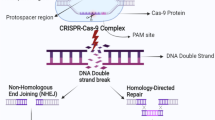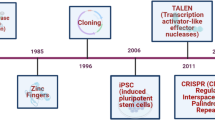Abstract
Serum paraoxonase (PON1) plays an important role in protecting low-density lipoprotein against oxidative modification. In this study, the full-length cDNA sequence (1,416 bp) of porcine PON1 was cloned by reverse transcription polymerase chain reaction and rapid amplification of cDNA ends. It was found to contain a 1,068 bp open reading frame encoding a deduced protein of 355 amino acids with a calculated molecular weight of 40.02 kDa. The genomic structure and sequence of porcine PON1 were also analyzed using a bacterial artificial chromosome clone of a Chinese Erhualian pig. The porcine PON1 gene contained nine exons and eight introns spanning approximately 29 kb, and was located on chromosome nine between microsatellite markers SWR915 and SW944 by IMpRH mapping. Porcine PON1 was highly expressed in kidney, followed by liver, lung and small intestine, expressed at an extremely low level in heart, and was hardly expressed in spleen, lymph, muscle of the anterior limb, cerebrum, fat, cerebellum or hypothalamus.





Similar content being viewed by others
References
Primo-Parmo SL, Sorenson RC, Teiber J et al (1996) The human serum paraoxonase/arylesterase gene (PON1) is one member of a multigene family. Genomics 33:498–507. doi:10.1006/geno.1996.0225
Mackness MI, Arrol S, Abbott C et al (1991) Paraoxonase prevents accumulation of lipoperoxides in low-density lipoprotein. FEBS Lett 286:152–154. doi:10.1016/0014-5793(91)80962-3
Watson AD, Berliner JA, Hama SY et al (1995) Protective effect of high-density lipoprotein associated PON. Inhibition of biological activity of minimally oxidized low density lipoprotein. J Clin Invest 96:2882–2891. doi:10.1172/JCI118359
Aviram M, Rosenblat M, Bisgaier CL et al (1998) Paraoxonase inhibits high-density lipoprotein oxidation and preserves its function. A possible peroxidative role for paraoxonase. J Clin Invest 101:1581–1590. doi:10.1172/JCI1649
Rodrigo L, Mackness B, Durrington PI et al (2001) Hydrolysis of platelet-activating factor by human serum paraoxonase. Biochem J 354:1–7. doi:10.1042/0264-6021:3540001
Ng CJ, Shiha DM, Hamaa SY et al (2005) The paraoxonase gene family and atherosclerosis. Free Radic Biol Med 38:153–163. doi:10.1016/j.freeradbiomed.2004.09.035
Hillier LW, Fulton RS, Fulton LA et al (2003) The DNA sequence of human chromosome 7. Nature 424:157–164. doi:10.1038/nature01782
Hassett C, Richter RJ, Humbert R et al (1991) Characterization of cDNA clones encoding rabbit and human serum paraoxonase: the mature protein retains its signal sequence. Biochemistry 30:10141–10149. doi:10.1021/bi00106a010
Adkins S, Gan KN, Modyt M et al (1993) Molecular basis for the polymorphic forms of human serum paraoxonase/arylesterase: glutamine or arginine at position 191, for the respective A or B allozymes. Am J Hum Genet 52:598–608
Leviev I, James RW (2000) Promoter polymorphisms of human paraoxonase PON1 gene and serum paraoxonase activities and concentrations. Arterioscler Thromb Vasc Biol 20:516–521
Lusis AJ (2000) Atherosclerosis. Nature 407:233–241. doi:10.1038/35025203
Draganov DI, La Du BN (2004) Pharmacogenetics of paraoxonases: a brief review. Naunyn Schmiedebergs Arch Pharmacol 369:78–88. doi:10.1007/s00210-003-0833-1
Paragh G, Seres I, Balogh Z et al (1998) The serum paraoxonase activity in patients with chronic renal failure and hyperlipidemia. Nephron 80:166–170. doi:10.1159/000045161
Mackness B, Mackness MI, Durrington PN et al (2000) Paraoxonase activity in two healthy populations with differing rates of coronary heart disease. Eur J Clin Invest 30:4–10. doi:10.1046/j.1365-2362.2000.00580.x
Mackness B, Mackness MI, Arrol S et al (1998) Serum paraoxonase (PON1) 55 and 192 polymorphism and paraoxonase activity and concentration in non-insulin dependent diabetes mellitus. Atherosclerosis 139:341–349. doi:10.1016/S0021-9150(98)00095-1
Mackness B, Durrington PN, Boulton AJ et al (2002) Serum paraoxonase activity in patients with type 1 diabetes compared to healthy controls. Eur J Clin Invest 32:259–264. doi:10.1046/j.1365-2362.2002.00977.x
Tanimoto N, Kumon Y, Suehiro T et al (2003) Serum paraoxonase activity decreases in rheumatoid arthritis. Life Sci 72:2877–2885. doi:10.1016/S0024-3205(03)00195-4
Senti M, Tomas M, Fito M et al (2003) Antioxidant paraoxonase 1 activity in the metabolic syndrome. J Clin Endocrinol Metab 88:5422–5426. doi:10.1210/jc.2003-030648
Liu W, Zhang Y, Liu Z et al (2006) A five-fold pig bacterial artificial chromosome library: a resource for positional cloning and physical mapping. Prog Nat Sci 16:889–892. doi:10.1080/10020070612331343207
Yerle M, Pinton P, Robic A et al (1998) Construction of a whole genome radiation hybrid panel for high-resolution gene mapping in pigs. Cytogenet Cell Genet 82:182–188. doi:10.1159/000015095
International Human Genome Sequencing Consortium (2004) Finishing the euchromatic sequence of the human genome. Nature 431:931–945. doi:10.1038/nature03001
Waterston RH, Lindblad-Toh K, Birney E et al (2002) Initial sequencing and comparative analysis of the mouse genome. Nature 420:520–562. doi:10.1038/nature01262
Humbert R, Adler DA, Disteche CM et al (1993) The molecular basis of the human serum paraoxonase activity polymorphism. Nat Genet 3:73–76. doi:10.1038/ng0193-73
Goureau A, Yerle M, Schmitz A et al (1996) Human and porcine correspondence of chromosome segments using bidirectional chromosome painting. Genomics 36:252–262. doi:10.1006/geno.1996.0460
Kelso GJ, Stuart WD, Richter RJ et al (1994) Apolipoprotein J is associated with paraoxonase in human plasma. Biochemistry 33:832–839. doi:10.1021/bi00169a026
Dantoine TF, Debord J, Charmes JP et al (1998) Decrease of serum paraoxonase activity in chronic renal failure. J Am Soc Nephrol 9:2082–2088
Biasioli S, Schiavon R, Petrosino L et al (2003) Paraoxonase activity and paraoxonase 1 gene polymorphism in patients with uremia. ASAIO J 49:295–299. doi:10.1097/01.MAT.0000066256.19852.29
Acknowledgments
We gratefully acknowledge Dr Ning Li, Dr Xiaoxiang Hu and Liming Ren for the provision of the Erhualian pig BAC library. We thank Dr Kui Li, Dr Zhonglin Tang, INRA and the University of Minnesota for the provision of the IMpRH panel. This work was supported by National “863” Program of China (No. 2007AA10Z161), Natural Science Foundation of China (No. 30771545), National “973” Program of China (No. 2006CB102101).
Author information
Authors and Affiliations
Corresponding author
Rights and permissions
About this article
Cite this article
Xie, S., Li, J., Chen, Y. et al. Sequence identification, chromosomal mapping and tissue specific expression of the porcine paraoxonase 1 (PON1) gene. Mol Biol Rep 37, 1347–1353 (2010). https://doi.org/10.1007/s11033-009-9514-6
Received:
Accepted:
Published:
Issue Date:
DOI: https://doi.org/10.1007/s11033-009-9514-6




